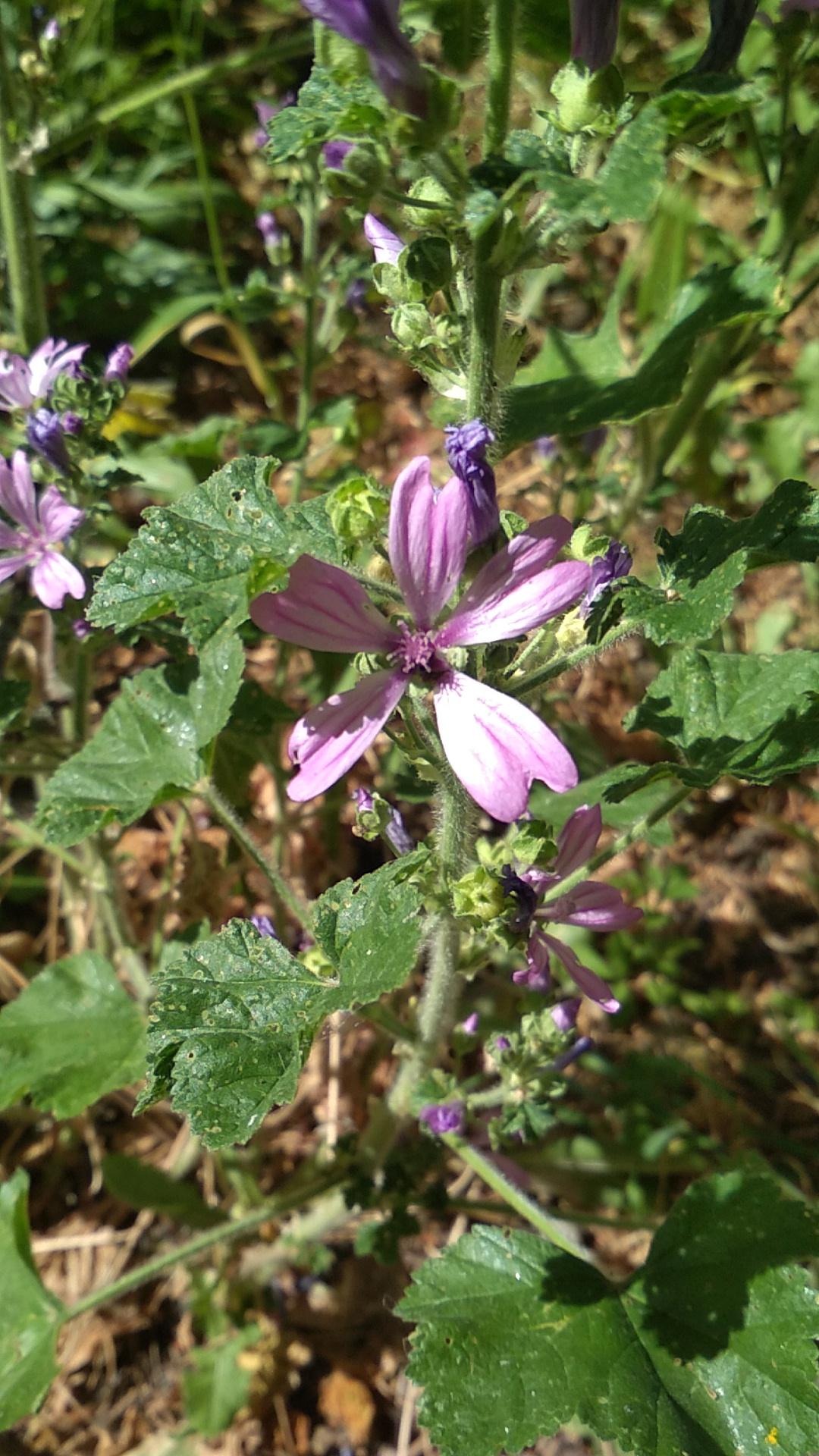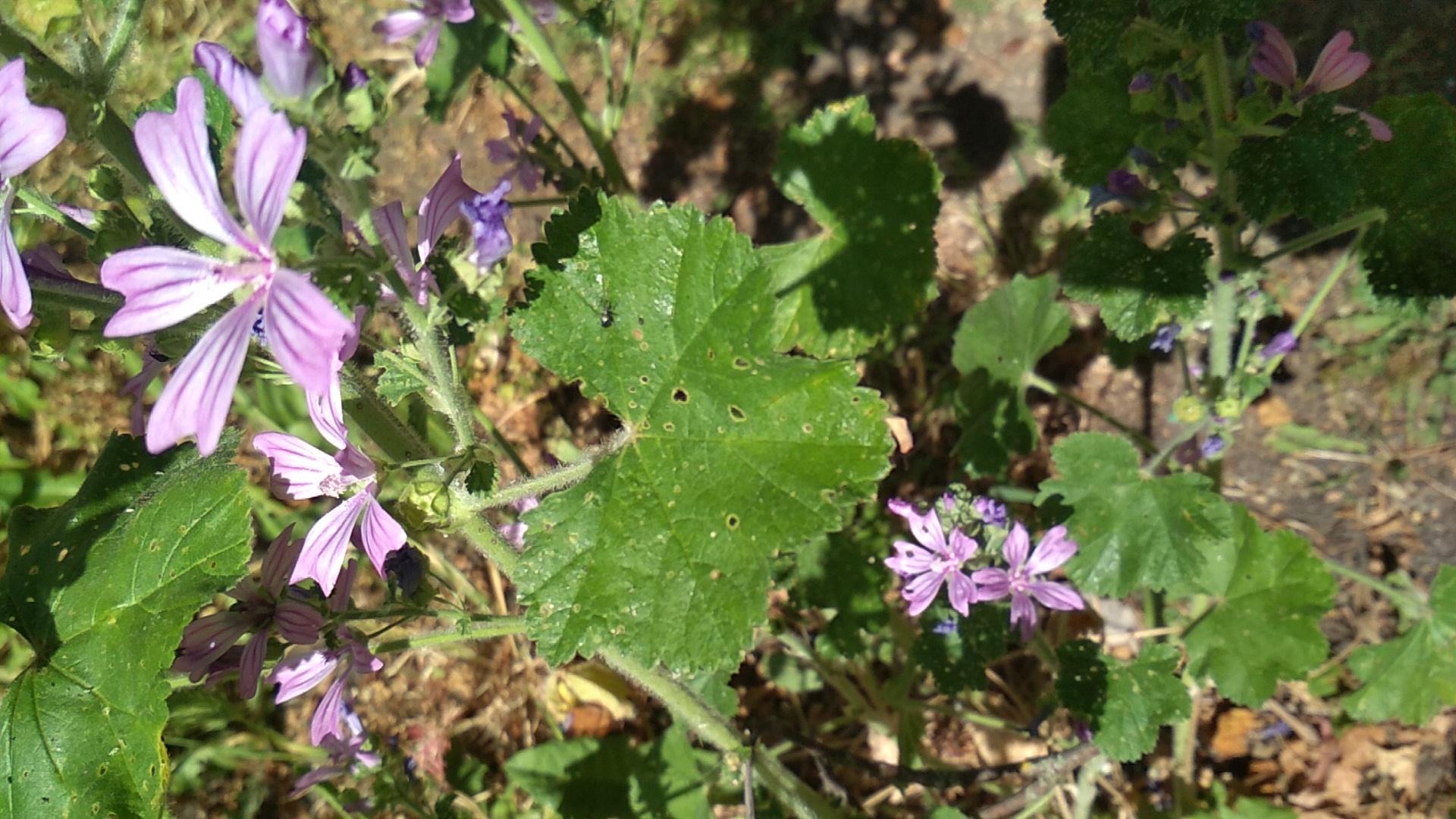The Royal Horticultural Society's website states that the plant should be exposed to full sunlight(1). The largest specimen in my garden is in a very sunny spot, but there are two other malva plants in the shade of the hazelnut tree, so I assume that partial shade is fine too, and the Missouri Botanical Garden website says so too (2). The two shade bound specimens have appeared later and are smaller, with one having no flowers yet. We'll see how the plant in full sun survives summer, considering we are already having a heat wave and the drought is severe all throughout western Europe.
The plant is stated to have medium water needs (1,2), and it hasn't rained properly in forever, but it is growing in the more woodsy part of my garden, which makes me assume that the water needs are reasonably met. It is also a naturalized or native plant in the garden, so I assume that the root system is pretty large.
Warning: This is a website made for the purpose of my education. I wish to share my journey with you in the hope of generating a desire in you to get to know your local environment better. I am not an expert at all. The only thing I forage in my garden at the moment are nettles and hazelnuts. I won't use any plant in any way until I am absolutely sure that I can identify it properly and know how to use it. Just because it is natural, doesn't mean it is safe, or healthy. Be careful out there.
The Common Mallow has been used for many purposes throughout the centuries, both for medicine and for food. As a medicine, its main effect is emollient(3), in that it softens the skin by adding a protective layer (4). As such, it has been used historically to minimize coughing and throat aches, as well as treat some skin concerns. It also has mild anti-inflammatory and laxative effects (5) As a food, it is very rich in nutrients. 100g of fresh Common Mallow provide 4.6g of protein, 1.4g of fat, including omega 3s and 6s, as well as vitamins A and C (6). With such a profile, it is no wonder that it has been widely cultivated (5).


- Malva sylvestris|common mallow. (2022, May 21). Retrieved from https://www.rhs.org.uk/plants/10799/i-malva-sylvestris-i/details
- Malva sylvestris - Plant Finder. (2022, May 21). Retrieved from https://www.missouribotanicalgarden.org/PlantFinder/PlantFinderDetails.aspx?taxonid=282568
- Mauve : bienfaits, allergie, comment l'utiliser ? (2022, May 21). Retrieved from https://sante.journaldesfemmes.fr/fiches-sante-du-quotidien/2749905-mauve-bienfaits-utilisation-allergie
- website. (2021). Emollients. Nhs. Retrieved from https://www.nhs.uk/conditions/emollients
- Norb, S. (2022, May 21). Sauvages du Poitou - Grande Mauve: quelques grammes de tendresse... Retrieved from https://www.sauvagesdupoitou.com/82/382
- Common Mallow - A Foraging Guide to Its Food, Medicine and Other Uses. (2022, May 03). Retrieved from https://www.eatweeds.co.uk/mallow-malva-sylvestris